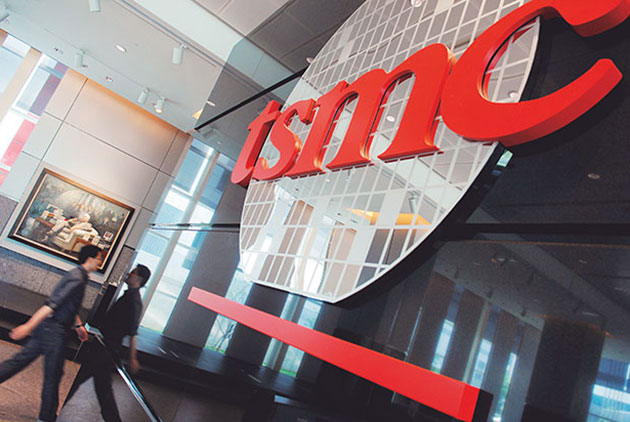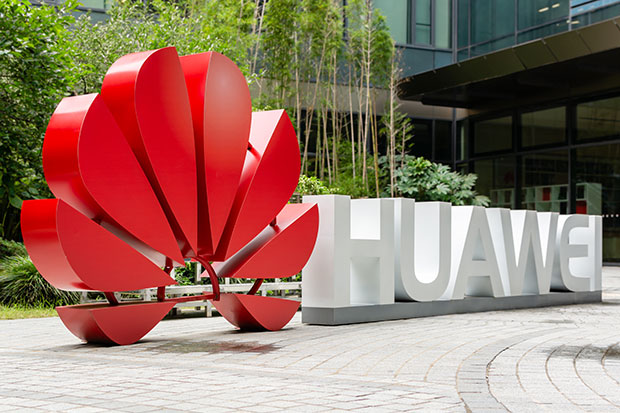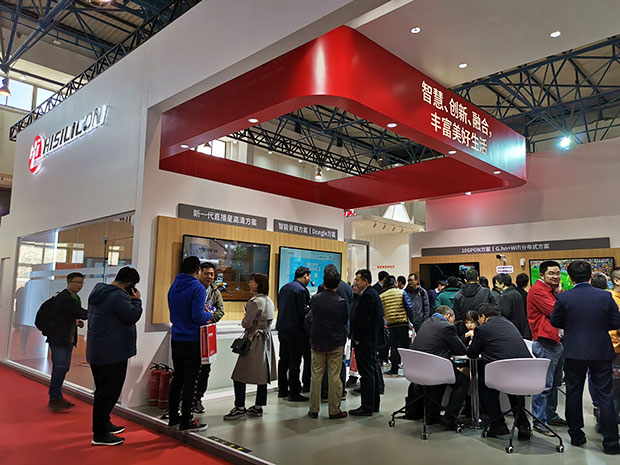Decoding U.S. Export Controls
Can TSMC Continue to Supply Huawei?

Source:Chien-Ying Chiu
The Trump Administration has placed Huawei on a blacklist that blocks companies using American technology from supplying the Chinese telecom giant. Taiwan’s TSMC does not think it will be affected, but is that really the case?
Views
Can TSMC Continue to Supply Huawei?
By Elaine HuangFrom CommonWealth Magazine (vol. 674 )
When United States President Donald Trump signed without warning an executive order in mid-May to put Huawei Technologies and 70 of its affiliates on the Department of Commerce’s “entity list,” it upped the stakes in the already tense trade dispute between Washington and Beijing.
Putting Huawei on the entity list meant U.S. companies could not sell goods or transfer technology to the Chinese telecom giant without U.S. government approval. As a result, major American semiconductor players such as Intel, Qualcomm, and Broadcom and memory chip maker Micron immediately issued statements saying they were freezing shipments to Huawei.
Trump’s thunder was quickly felt across the Pacific Ocean in China, Taiwan and South Korea. Samsung Electronics called an emergency meeting soon after Trump signed the order.
“If memory chip maker Micron cannot ship components to Huawei, that may be an opportunity for Samsung,” said a Samsung employee, who was on the phone with a Taiwanese tech engineer when the news broke and was called urgently to attend a meeting.
At the same time, at Huawei headquarters in Shenzhen, a Taiwanese product manager responsible for Huawei’s notebook computers nervously wondered whether the U.S. blacklist would include American brand chips. When he heard that it would definitely cover American wafer and memory chip companies, the manager said helplessly: “Our notebooks are going to take a hit. They use CPUs from Intel.”
Perhaps most noteworthy amid the chaos in the tech sector triggered by the U.S. move and the escalating U.S.-China trade war is that semiconductor vendors from countries outside the United States, including from Japan and Germany, were also announcing they would stop making shipments to Huawei.
Infineon Technologies, formerly the semiconductor division of German conglomerate Siemens, temporarily canceled some of its shipments to Huawei, according to a Nikkei Asian Review report. Another major semiconductor vendor that supplies the underlying architecture for Huawei’s chipsets, Britain-based ARM, also announced it was cutting ties with the Chinese company.
After ARM gave the order internally, ARM salespeople and engineers were barred from meeting with Huawei employees and were not even allowed to answer incoming phone calls from the Chinese company, an analyst at a foreign brokerage told CommonWealth, citing an ARM employee.
“Everything has been cut off, because meetings could also be seen as transferring technology,” the analyst said, quoting the ARM employee.
Trade War Trigging Global Tech Chaos
The U.S. Commerce Department’s use of the Entity List in the Huawei case has wielded impressive power. Once Huawei was placed on the list, it was not only American companies that moved to immediately cut ties; foreign companies were also caught in the storm.
PowerPoint presentations by John Haberstock, a regional export control officer at the Commerce Department’s office in Hong Kong, whose territory covers Japan, Thailand, the Philippines, Taiwan, Hong Kong and Macau, explain the export control system.
The Department’s Bureau of Industry and Security (BIS) mainly regulates dual-use products that could be used in both commercial or military applications. They include carbon fibers, machine tools and semiconductors.

Once Huawei was put on the Entity List, it was subject to U.S. “export controls,” or “Export Administration regulations,” on commodities, software and technology either located in the United States, of U.S. origin, or found in foreign-made items. The latter classification is the most important to technology companies in Taiwan, because it covers “foreign-made items abroad with controlled U.S.-origin content” that exceeds a minimum threshold.
That threshold is 10 percent if the products are destined for Iran, North Korea, Sudan or Syria, and 25 percent for all other countries, including China in which Huawei is based, one of Haberstock’s PowerPoint presentations showed.
In other words, if a company sells Huawei a product, and 25 percent or more of its content is of U.S. origin, then that company is considered an American company and must comply with the American government’s restrictions on Huawei.
Not surprisingly then, when Trump put Huawei and its affiliates (including its sales agent in Taiwan Xunwei Technologies) on the entity list, it set off chaos among major European and Asian tech vendors.
Not long after the U.S. move, for example, Infineon launched a survey of its suppliers that included a request for a report from a Taiwanese IC packaging company detailing the percentage of components used in packaging materials for Infineon products sourced from American vendors.
After preliminary figures became available, Infineon issued an official statement on May 21. “The great majority of products Infineon delivers to Huawei is not subject to U.S. export control law restrictions, therefore those shipments will continue.”
ARM, on the other hand, decide to comply with the U.S. order. The BBC obtained a company memo sent to employees in which ARM instructed employees to suspend business with Huawei, including halting “all active contracts, support entitlements and any pending engagements.”
As to why ARM meets the “25 percent” threshold, the BBC wrote that ARM’s designs form the basis of most mobile device processors worldwide, including much of the underlying technology for Huawei’s chips, and that ARM said in the memo its designs contained “U.S. origin technology.”
The analyst with a foreign brokerage said one or more of the cores that ARM has authorized Huawei to use may have originated in the company’s R&D center in the United States, justifying the company’s contention.
What about TSMC?
At this point in time, the company that has drawn the most attention in Taiwan’s high-tech sector in the Huawei affair is TSMC, the world’s largest contract chipmaker.
TSMC has become known in recent years as a “Huawei-concept stock” because Huawei subsidiary HiSilicon Technologies, a China-based semiconductor company, is TSMC’s second biggest customer behind only Apple. It accounted for 8 percent of TSMC’s revenue in 2018 and for 11 percent of its revenue in the first two quarters of 2019.
“My friend at Huawei has said repeatedly that it has prepared all of the components it needs and won’t have a problem in the short term,” said a Taiwanese tech analyst. He said HiSilicon placed huge volumes of orders for 16-nanometer chips with TSMC in the first half of 2019, in effect rescuing TMSC’s first and second quarter results.
Though the first half is typically a slow period for smartphones, and Apple and Xiaomi both revised their guidance for shipments downwards, HiSilicon, which supplies all of its production of smartphone chips to Huawei, had delivery estimates that were “super optimistic,” this analyst said. (Read: Apple’s Souring - How’s Manufacturing Transitioning in the Post-Smartphone Era?)
“It’s true that Huawei was performing better than others. But analysts were discussing among themselves whether Huawei’s sales were really that good,” recalled the analyst, who believes that now the situation is much clearer.
“There was a reason why they were building up inventory, kind of like just before Pearl Harbor.”
HiSilicon has been always been the TSMC customer most interested in getting in on advanced technologies. TSMC has just begun mass producing using a second-generation 7nm process, called 7+, that was the first to use hugely expensive EUV lithography technology, and HiSilicon pushed to be the “first guinea pig.” (Read: TSMC’s Unsung Weapon)
In contrast, TSMC’s biggest customer, Apple, has been more conservative, preferring to wait until mass production of the 5nm process using EUV lithography begins next year before moving up the technology ladder.
Have you read?
♦ Anti-Huawei Campaigns, Chance or Crisis?
♦ China No Longer Experiencing Wild Growth
♦ China’s IC Ambitions: Big Money ≠ A Second TSMC
Legal Gray Area Easy to Manipulate
Soon after Trump’s move on Huawei, TSMC immediately expressed its support for its customers.
“We have established a complicated and sophisticated export control compliance system,” the Nikkei Asian Review quoted TSMC spokesperson Elizabeth Sun as saying. “Based upon the data in the system, we are not changing our shipping practice for the time being.”
CommonWealth asked TSMC whether the statement meant that TSMC had completed internal calculations and confirmed that the less than 25 percent of the technology used in the products it shipped to HiSilicon originating from the United States.
“[Export controls] are more than just the 25 percent rule. There are other rules, and our internal export management system tracks and monitors all shipments to ensure that we are in compliance with the rules,” Sun said.
The problem is trying to figure out how to calculate the percent of “U.S.-origin” technology in a product and whether it adds up to 25 percent. Who sets the standard? No detailed regulations exist in the Department of Commerce’s public documents, leading to different opinions on the issue.
One former executive at IC design house MediaTek believes TSMC would have a hard time falling under the “25 percent” threshold because the machines used in wafer foundries, such as for etching and CMP (chemical-mechanical planarization), generally come from leading American semiconductor machinery vendor Applied Materials.
“Of its equipment, at least 60 percent comes from Applied Materials, so it would be hard [for TSMC] not to exceed the 25 percent threshold,” he says.
But the analyst with a foreign brokerage said that if you carefully calculate the cost structure of a wafer, it includes spending on R&D, management and manpower costs. Almost all of TSMC’s R&D team and management team is in Taiwan, and therefore once you have figured in all of those expenses, U.S. content in the product may be below 25 percent.
He also cautioned, however, that “this regulation has left a gray area, which is how you calculate American content. This has given companies room for maneuver in deciding whether they want to lean closer to the U.S. or China.”
HiSilicon’s Threat to U.S. Companies
Many Taiwanese semiconductor players believe that ARM and key American electronic design automation (EDA) companies have dealt a severe blow to HiSilicon by suspending their technical support of the Huawei subsidiary.
But it cannot be ruled out that the U.S. government might take even tougher measures against Huawei and HiSilicon (such as putting China in the same export control category as Syria, Iraq, North Korea and Sudan and subject it to the 10-percent U.S. origin rule) because of the future threat HiSilicon poses to U.S. companies in 5G.
 HiSilicon is TSMC’s second biggest customer behind Apple. The Huawei subsidiary accounted for 8 percent of TSMC’s revenue in 2018 and for 11 percent of its revenue in the first two quarters of 2019. (Source: HiSilicon)
HiSilicon is TSMC’s second biggest customer behind Apple. The Huawei subsidiary accounted for 8 percent of TSMC’s revenue in 2018 and for 11 percent of its revenue in the first two quarters of 2019. (Source: HiSilicon)
In January, U.S.-based Alliance Bernstein took the rare step of issuing a research report on an unlisted company, releasing an 18-page report titled “HiSilicon – Another National Champion You Have Yet to Know” that described in detail this new IC design star that had hidden behind Huawei until the U.S.-China trade war broke out.
The report estimated that HiSilicon had sales of US$7.6 billion in 2018, only slightly below that of Taiwanese IC design house MediaTek, which saw sales edge lower to NT$238.1 billion last year. It forecast that HiSilicon, which has averaged annual sales growth of 20-30 percent, would surpass MediaTek this year to become Asia’s biggest, and the world’s fifth largest, IC design company.
The report also revealed something not previously known to many players in Taiwan’s tech sector – that Huawei has made great strides in the cloud market in recent years and was now ranked first and second in market share, respectively, in China’s storage and server markets.
Some of those machines are equipped with ARM server processors designed by HiSilicon, and this year Huawei came out with a third-generation product using TSMC’s 7nm process, directly threatening Intel’s core business. (Read: Taiwan, Unexpected Beneficiary of US-China Trade War)
It remains unclear when and how the U.S.-China trade war will be resolved, but whatever the solution, fault lines in the global high-tech battleground are emerging that are likely to have long-term implications.
Translated by Luke Sabatier
Edited by Sharon Tseng








